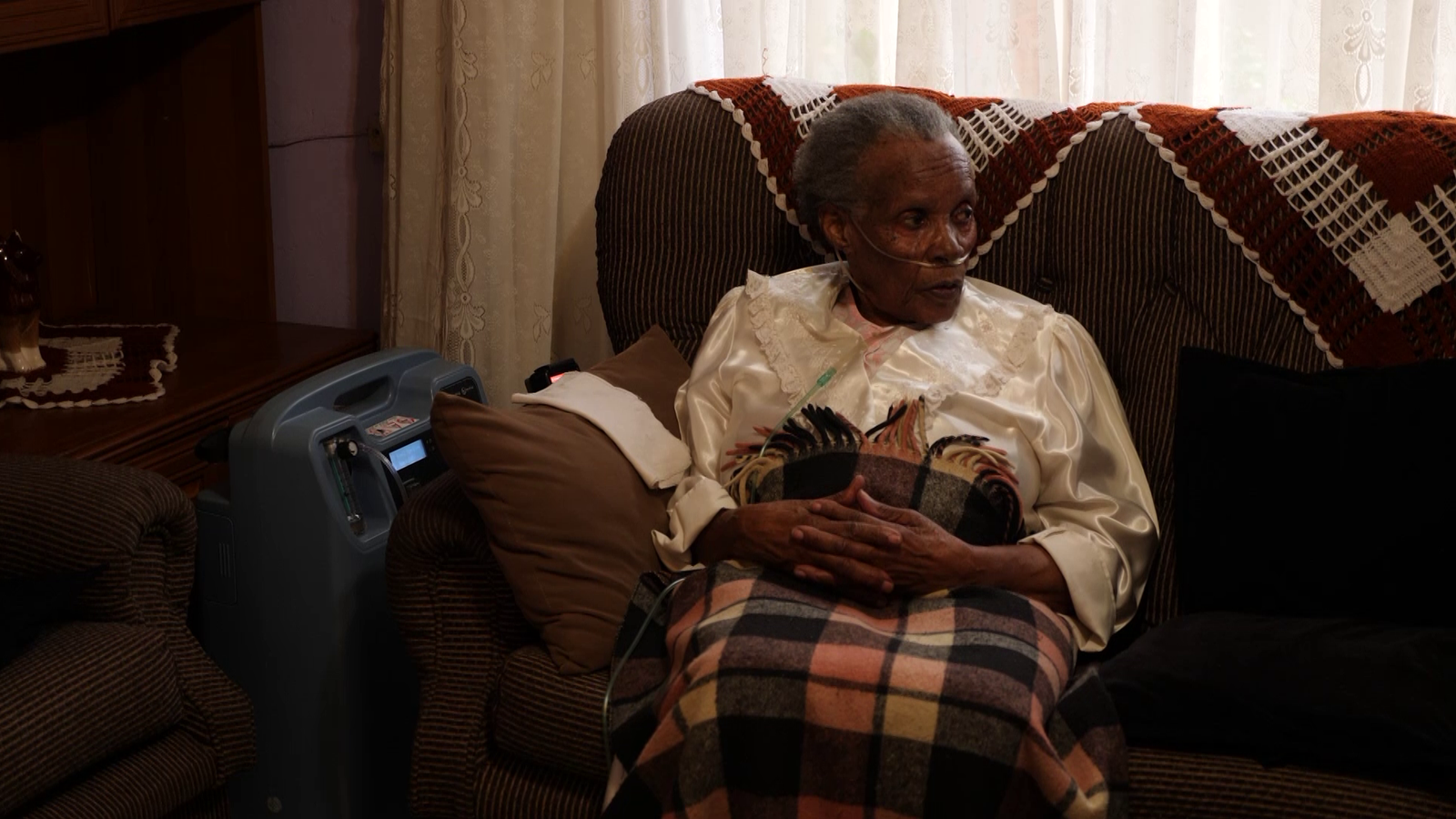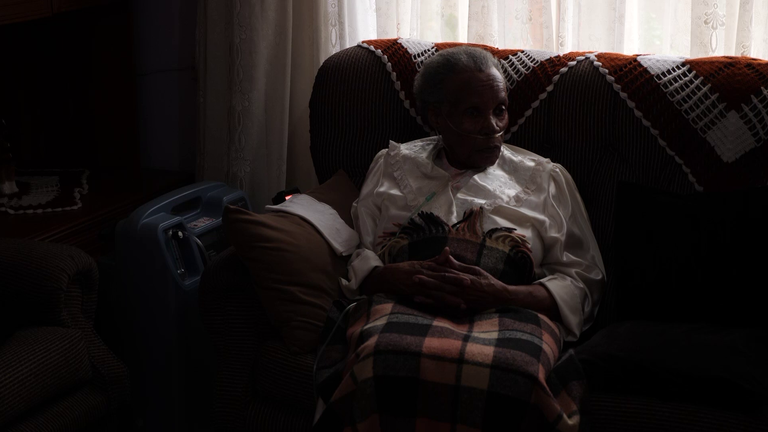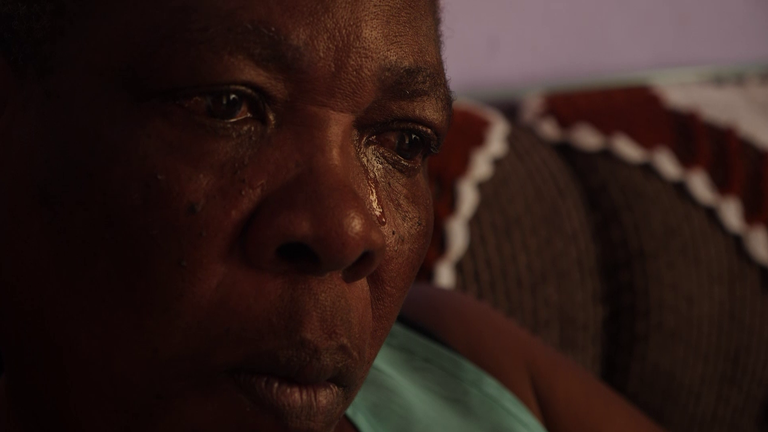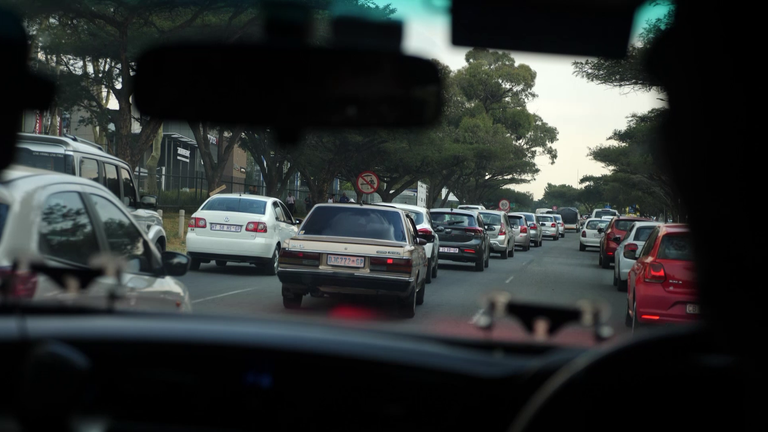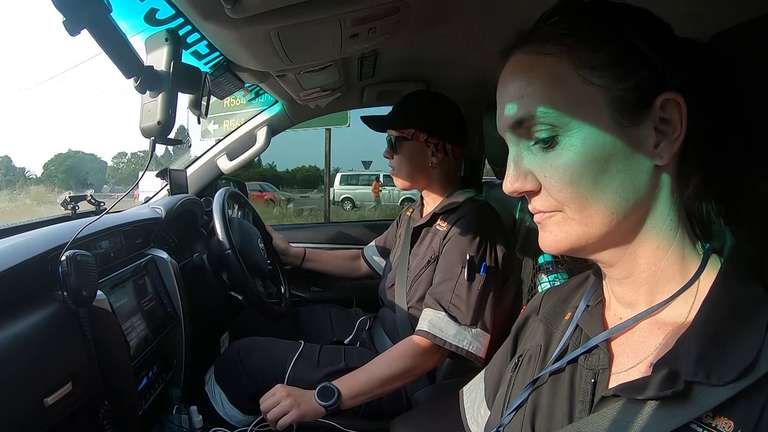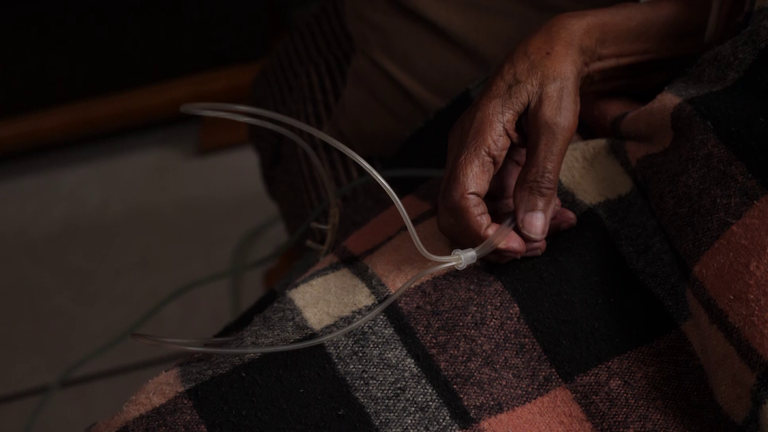A tube runs from Jeanette Mahlangu’s nose to an at-home oxygen concentrator positioned on the side of her couch.
The 85-year-old’s chest rises steadily as she stares at a clock on the wall of her South Africa home in Soweto’s Meadowlands.
It is just after 6pm when the electricity goes out and her oxygen support abruptly stops.
She has four hours of unassisted breathing until the power comes back.
This is the second blackout of the day and every minute that passes could be her last.
“I’m expecting death any time – even if it is not this day,” says Jeanette calmly.
Her daughter and sister stare at her with deep concern as she carefully removes the tube from her nose.
She is resigned to death, but they are not.
“My mother is quiet and expecting this. I can’t say anything but myself, I am scared. I don’t like this,” says her daughter Dani Mahlangu.
Their mobile phones sit on the table.
The only one with little battery left has no signal.
During the rotational power cuts, the network drops and phone calls are near impossible to make.
If Jeanette collapsed, her family would struggle to even call an ambulance.
If they did manage to contact the emergency services, paramedics would have to navigate gridlocked roads with non-functioning traffic lights to transport her to a public hospital likely running on generators.
The minister of health, Joe Phaahla, recently informed parliament that only 43 of South Africa’s roughly 400 public hospitals have been recorded as exempt from “load-shedding” – a euphemism for the rotational, scheduled power cuts implemented to offset pressure on the country’s electricity supply.
“We were called to a hospital where the generator stopped working,” said Nicole Morrison, an Emer-G-Med paramedic.
“There were 18 paramedics and nine ICU ventilated patients.”
“So, it was two paramedics per patient, and we had to ventilate them manually for four hours.”
The frequent breakdowns of South Africa’s ageing coal-fired power stations have worsened a widening gap between electricity supply and the needs of a growing population.
Read more world news:
Israel president uses artificial intelligence to write part of major speech
India’s richest man loses $100bn in less than a week
The power utility Eskom is now implementing up to nine and half hours of load-shedding a day after six generating units broke down in just 24 hours.
The ruling Africa National Congress (ANC) party is criticised for not heeding warnings from as far back as 1998 when the Department of Minerals and Energy said that Eskom’s generation capacity surplus would be fully utilised by 2007.
South Africa did run out of energy in 2007 and load-shedding implementation began.
The deficit has steadily worsened and in the last few years the country has descended into an electricity crisis.
While addressing his ANC party at a four-day strategy meeting on Monday, President Cyril Ramaphosa pointed to a potential national state of disaster declaration.
This would give officials sweeping powers and access to departmental budgets to use as they see fit.
“There was talk about a national state of disaster, like what we did when we faced COVID-19, and there is broad agreement that we should proceed in that direction, he said.
“We must resolve the immediate task of load-shedding within a much shorter timeframe than what has been projected.”
But he warned that South Africans will have to face the reality that load-shedding will be around for years to come.
In a climate of building discontent, the move could feed distrust if it does not come with quick results.
Protests are becoming more frequent and load-shedding is now a symbol of state corruption and infrastructural collapse.
As for Jeanette, who witnessed Soweto join the electricity grid for the first time in a post-apartheid South Africa, hope is slim.
She sits and waits in her living room with her daughter and sister – not for a solution that may never come – but for the inevitable end.
